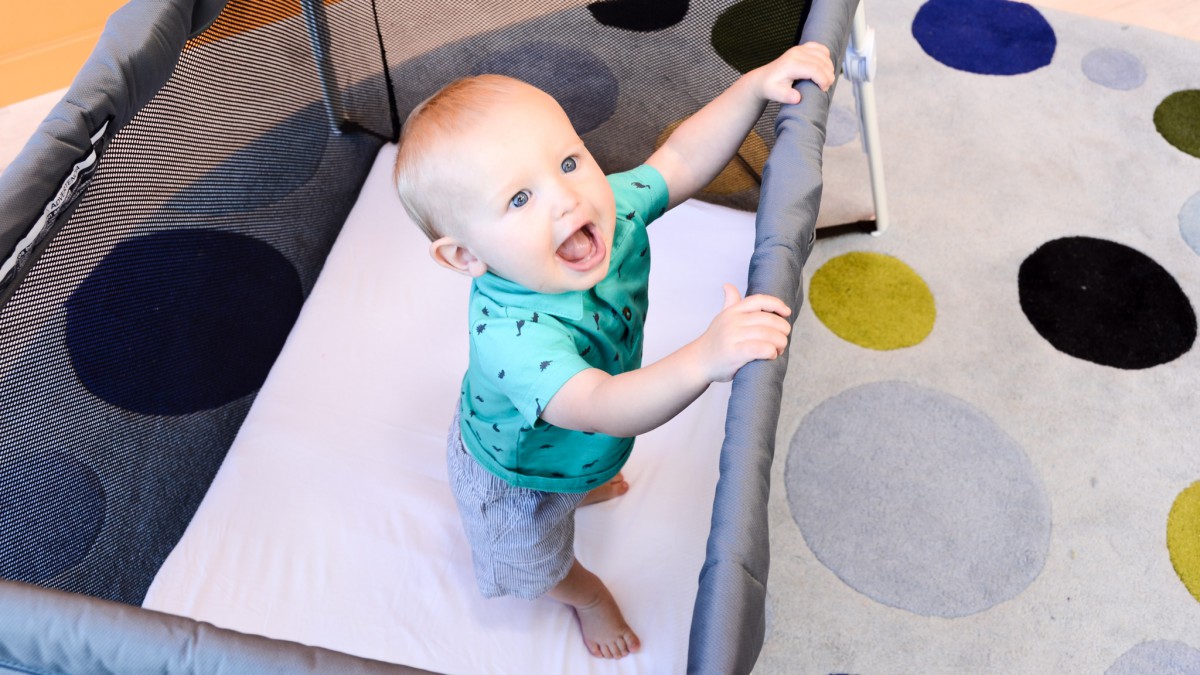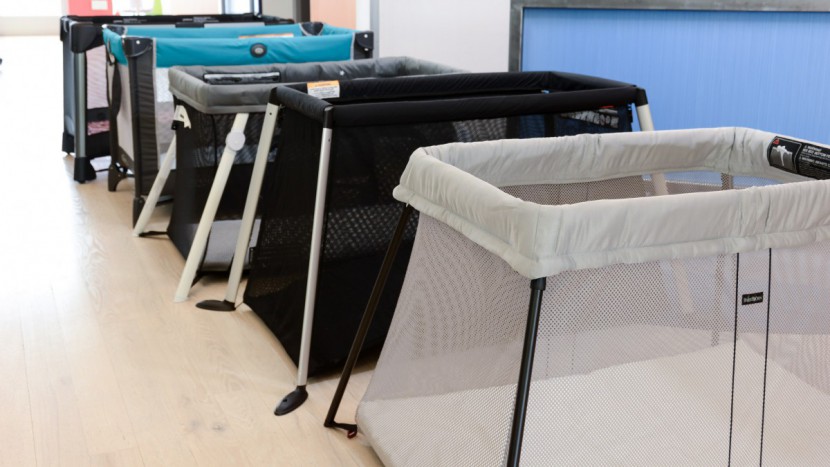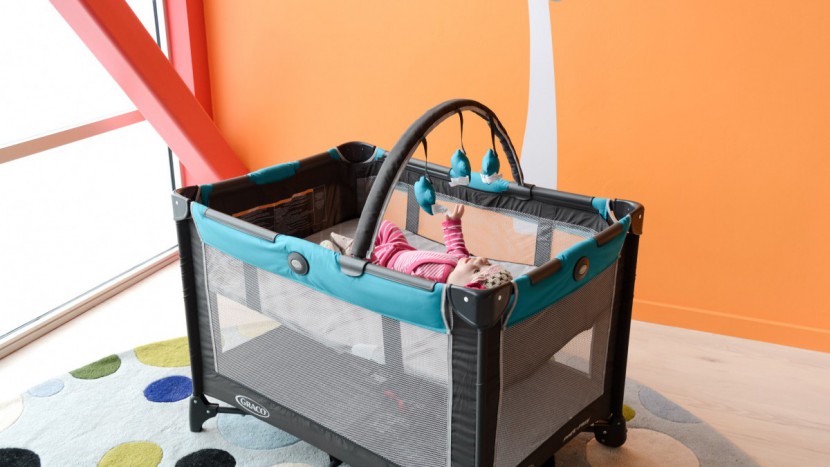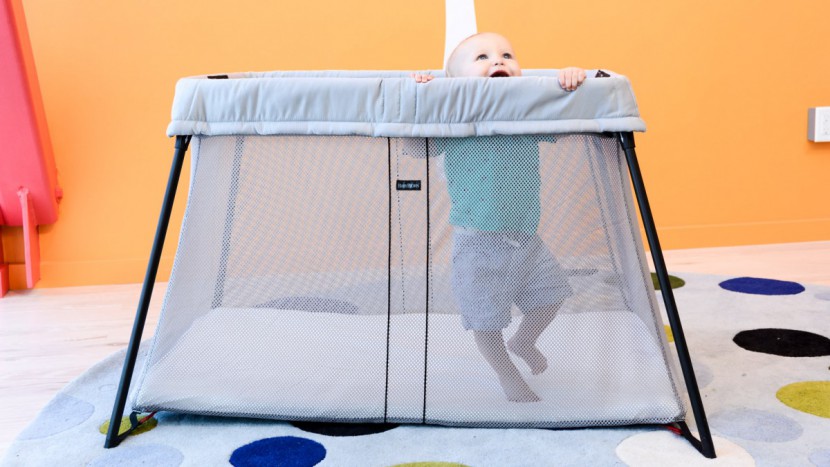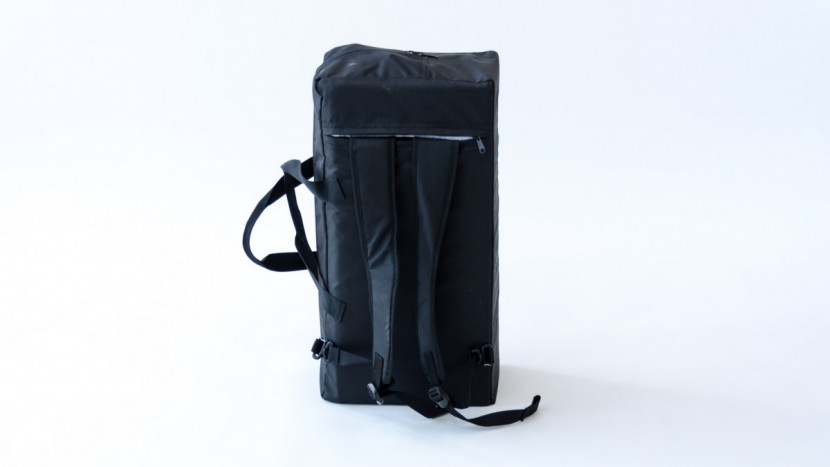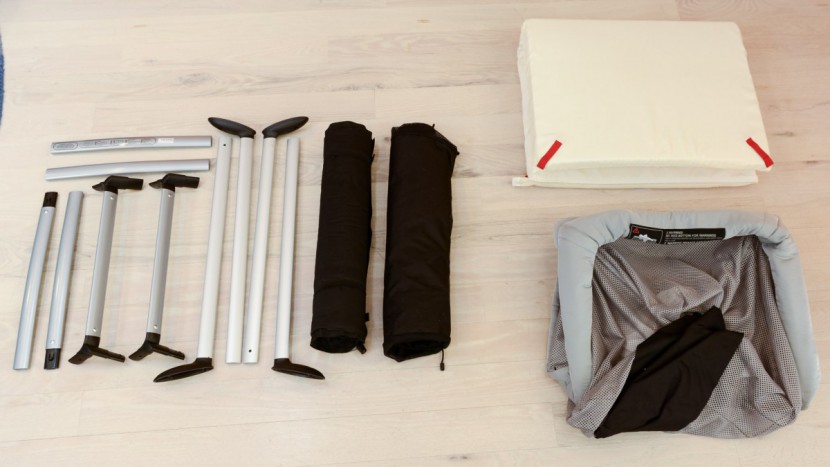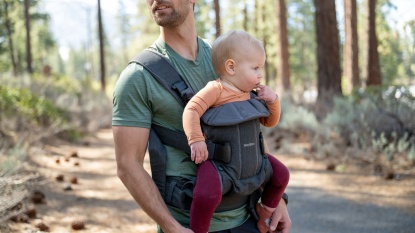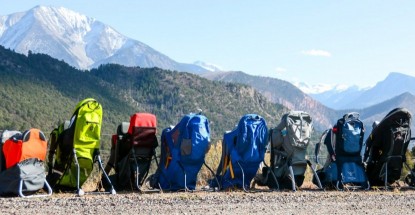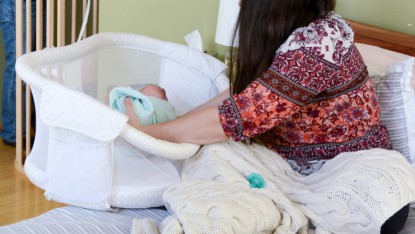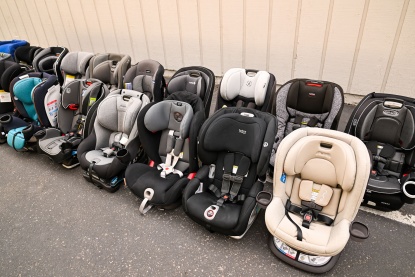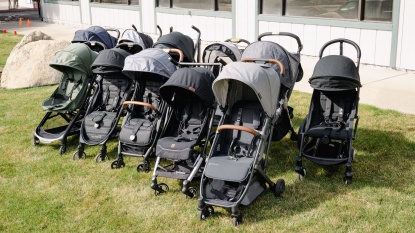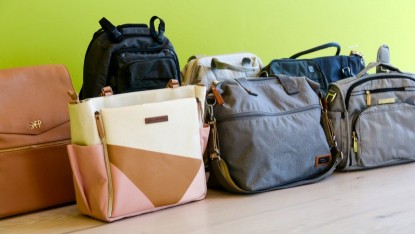Why Purchase a Travel Crib?
Most families buy a full-size crib for their baby when sleeping at home. But what do you do with your little one when you travel or need a moment to yourself? This type of situation is where a travel crib/play yard comes into play. These portable cribs provide a safe sleep environment similar to your baby's regular crib, so you can keep your baby on their routine with fewer hiccups related to traveling. A well-designed portable product is easy to transport and use. They provide a safe sleeping environment free of suffocation and strangulation hazards. Even if you do not plan to travel, a product of this kind is great to have for grandparents or caregivers to use. They also provide a safe play area anywhere the environment presents hazards that are hard to control. You can survive without a portable crib, but if your budget permits, we think they're well worth the extra expense considering the potential safety benefits and regular sleep.
Types of Travel Cribs
There are two basic types of portable cribs or play yards.
Full Feature
The full feature cribs usually include additional options like a removable bassinet or changing table for infants and storage possibilities for diapers and other supplies. These products tend to be heavier or larger, and their open square footage is often greater, so they can do double duty as a play yard. The Graco Pack 'n Play On the Go and the 4moms Breeze are good examples of this type of product. While some products have accessories for purchase, these traditionally come with accessories.
While bassinets are useful, and it is nice they come with the crib, most are only useful until the baby is 15 lbs or starts to roll over. So we caution against making your purchase decision based on this feature alone. The larger size and added weight found in this gear style make them harder to transport than their minimalist counterparts, which are things you should consider depending on how you intend to use the crib.
Basic/Minimalist
Minimalistic portable cribs are lightweight and fold into a smaller package, making transporting and storing them easier. Rather than offering short-term use accessories, this type of gear has a design for quick setup and easy carrying.
The most significant advantage of a minimalist unit is its lighter weight and compact size that fits nicely into a tote-able bag. Setup times are generally fast, and they are usually smaller when set up, so they are ideal for use in smaller spaces like a hotel or tent. If portability or limited space are factors for you, then the minimalist approach is a great option. While this style lacks a bassinet/changing table, it is safe to rest infants on the main mattress for sleep, and a bassinet is not necessary for safe sleeping.
We recommend you choose a product with materials that are free of chemicals and flame-retardants, and preferably those that are independently OEKO-TEX verified such as the Baby Bjorn Travel Crib Light or the Lotus Travel Crib. You may pay a premium for the high-end materials, but we think limiting your child's exposure to dangerous chemicals is worth the added cost. The Environmental Working Group has a helpful article concerning the danger of fire retardants in the home.
Safety Considerations: Flammability Standards
At BabyGearLab, product safety is always one of our primary concerns. To help you make the best decision when selecting a travel crib, we feel it would be negligent not to mention the use of flame retardants and other harmful substances used in producing some travel cribs.
The vast majority of items sold for infants and children, such as mattresses and diaper changing pads, are treated with chemical flame-retardants, which link to a range of health problems in both children and adults, with tests showing higher concentrations of these substances in the bloodstreams of younger children than in adults. To understand why products include flame retardants, a bit of background will be helpful.
In 1975, the state of California enacted Technical Bulletin 117 (TB-117) as a standard. TB-117 requires all household furniture to meet flammability standards, including furniture for babies. TB-117 was created because of concern for fire safety in the home and was designed to give occupants more time to escape in the event of a fire. The standard requires that the foam in furniture withstand 12 seconds of open flame exposure, such as from a candle. Flame retardants are applied to the foam so it can meet the requirements. Unfortunately, many of the flame-retardants used in furniture have been proven to be the cause of or increase the risk of a host of health problems including cancer, infertility, genetic mutations, congenital disabilities, developmental delays, and obesity.
In an interesting twist, it turns out that these flame retardant chemicals do not work to slow the spread of fire in real-world conditions. Instead, they are of limited use and have even been shown to increase the levels of deadly toxins in smoke. As smoke inhalation is the leading cause of death in fires, flame retardants are serving to exacerbate an already grim reality. While they help materials meet the standard, that is about all they do.
How is it Legal to Use Toxic Chemicals in Home Furnishings?
In 1976, the federal government enacted the Toxic Substances Control Act. The law was supposed to regulate chemicals. However, upon its enactment, some 60,000 chemicals (already in existence) were grandfathered in as “safe.” Also, the law is fundamentally flawed in that the burden of proving a chemical is safe does not lie with the manufacturer. Rather, the EPA must show that the chemical is dangerous for it to be banned. This unfortunate “regulation” has allowed tens of thousands of synthetic chemicals to go untested and inundate the marketplace and our homes.
For safe sleeping considerations and to reduce the risk of Sudden Infant Death Syndrome (SIDS) or other sleep-related deaths, please follow the AAP's safe sleep recommendations. You can also check out our article on How to Protect your Infant from SIDS and other Causes of Sleep-related Deaths.
Back to TB-117
Though TB-117 is a California law, its impact affects the entire United States. Manufacturers do not want to carry dual inventory and thus sell furniture that is TB-117 compliant throughout the United States and Canada.
As of January 2014, the law was amended and is now known as TB-117-2013. The new law changes the open flame test to a smolder test (like a smoldering cigarette) that is passable without treating furniture with toxic chemicals. What TB 117-2013 does NOT do is to prevent the use of flame retardants. Industry, however, does have the option to produce furniture without them. As with BPA-free products, flame-retardant-free home furnishings are sure to increase in supply due to consumer demand. However, buyers need to be savvy during this transition as manufacturers can sell products that comply with the old TB-117 standard. Though TB-117-2013 is a step in the right direction, we are still a long way from eliminating toxic chemicals.
What all of this means for you
- If products are labeled TB-117 compliant, you can assume they contain chemical flame-retardants.
- If products are labeled TB 117-2013, they may still include chemical flame-retardants.
- Manufacturers are under no legal obligation to disclose whether or not they use chemical flame-retardants or what type.
- Look for products that are independently tested and verified by organizations such as OEKO-TEX.
More information on this topic can be found at GreenSciencePolicy.org and The Center for Environmental Health (CEH).
Choosing the Right Travel Crib for You
Choosing the right portable crib or play yard doesn't have to be confusing. You can quickly narrow the field to the right option for your needs using the questions below.
First: Can I carry it?
Portability is essential, and you should consider if the size and weight of each contender will meet your goals and be manageable by your family. If you plan to travel by plane frequently and need a lightweight or smaller option, you'll want to steer clear of the Joovy Room2 and the 4moms Breeze, which are both over 20 lbs and larger when folded than the competition. The BabyBjorn Travel Light Crib or the Lotus Everywhere may be more viable options with weights under 13 lbs and smaller folded sizes. Alternatively, if you plan to use your crib as a safe place for your baby to rest while you cook dinner or take a shower, then a more substantial play yard with wheels may be the better choice for your goals.
Second: How hard is it to set up?
The time and effort it takes to set up a portable crib can make owning it a pleasure or a curse. No matter how you intend to use it, we think most parents will agree ease of use is important and a factor to consider. If you plan to travel, a quick bed set up when you reach your destination might be a lifesaver to keep the baby asleep or on a regular sleep schedule. If the product is primarily used at Grandma's house or with the sitter, then you may have more wiggle room in how long it takes to assemble the product. Either way, we suspect few parents will want to assemble the crib every time they need it (like the Phil and Teds Traveller), and most parents will prefer the unfold and lock-in place design found in most of the competition. The BabyBjron Travel Crib light can be set up and ready for sleep in about 1:37 minutes/seconds, compared to the Phil and Teds Traveller, which takes over 8 minutes. The Graco Pack 'n Play on the Go takes only 1:47 minutes, and the Lotus Everywhere has a time of 2:13 minutes on average.
Finally: What is it going to cost me?
The products in this review range in list price from $70 to $300. The top-scoring products are $300 and $250 for the Lotus Everywhere and the BabyBjorn Travel Crib Light. We understand this might be more than some parents want to spend for an occasional use item, which is why the Graco Pack 'n Play on the Go is a good choice with a budget-friendly price and an above-average score.
Conclusion
Purchasing a travel crib can be daunting as the products seem very similar at first glance. It is easy to fall into the “spend less get the same” trap. However, in our research, we discovered that the performance and quality of each product vary greatly and are only somewhat dependent on price. No matter which crib you settle on, we think there is something for everyone in our selection, specifically the top-performing award winners. Happy sleeping!

